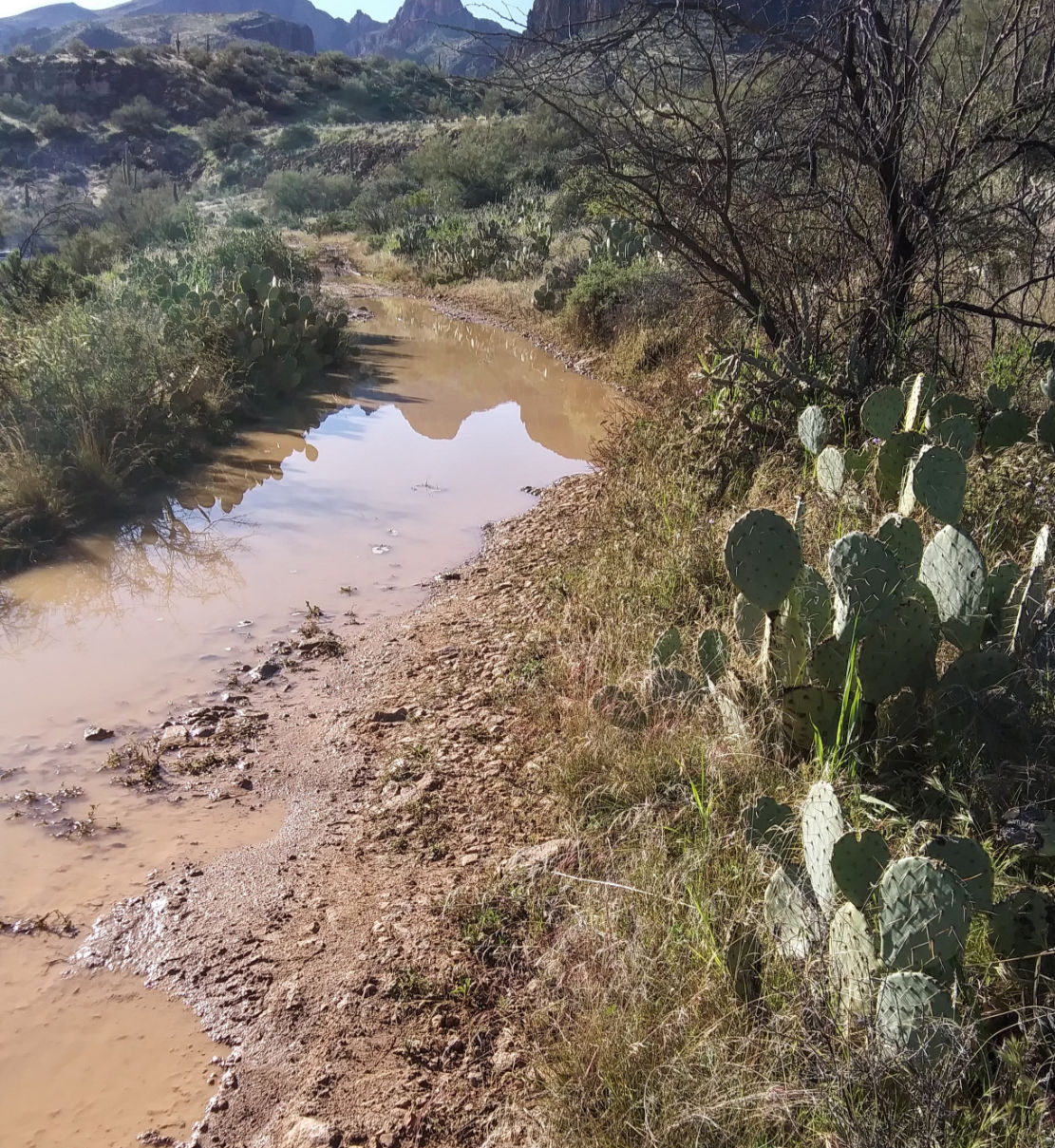
IT HAD BEEN SPRINKLING ON AND OFF as I drove, and the forecast called for more serious rain during the night. The previous night’s rain had been light, but that was 200 miles away on the other side of a mountain range. There was no guessing whether tonight’s rain would be better or worse.
I had located a boondocking area on iOverlander.com near where I wanted to hike the next day, but all I knew was what was in the user reviews. What would the conditions be like if (A) it was wet from yesterday’s storm, or if (B) it got rained on tonight? I’d have to see for myself.
The dirt road from the pavement snaked up a grass and sage covered hill. It was dry. Good. It was hard packed with a high gravel and stone content, which is also good. The reviews hadn’t mentioned how rough the road was. Ruts, rocks, potholes. But it was doable.
On the way up trail to the campsite I thought about my personal rules for avoiding getting stuck in situations like this, when the weather might turn wet. I thought they might be useful for the rest of you.

When in doubt, walk the road first. Don’t discover the bad part only after it’s under your wheels and it’s too late to back up or turn around.

If you encounter the slightest bit of dicey traction on the way in, leave. But don’t get yourself stuck while turning around.

If there’s a water crossing or a dry wash, go elsewhere. Rain could change everything between then and when you need to leave.

Don’t go anywhere you’ll need to go uphill to get out. Just because getting in was easy that doesn’t mean getting out will be.

Pick the site closest to the good road. You want fewer opportunities to get stuck, and you’ll spend less time as you drive out worrying whether your luck is about to run out.

Pick a site at least the same level as the road, if not higher. Again, avoid having to go uphill.

Set up camp with the nose of your vehicle pointing out of the site and downhill. Not only is this a good general safety rule — you can flee faster — but in slick conditions you’ll already be headed in the right direction. The more maneuvering you try to do, the more opportunities you’ll have to get stuck.
And, of course, the advice above also applies to any low traction situation. Sand, deep loose gravel, snow or ice, even wet leaves.
The basic idea is that when traction is bad, make gravity work for you.
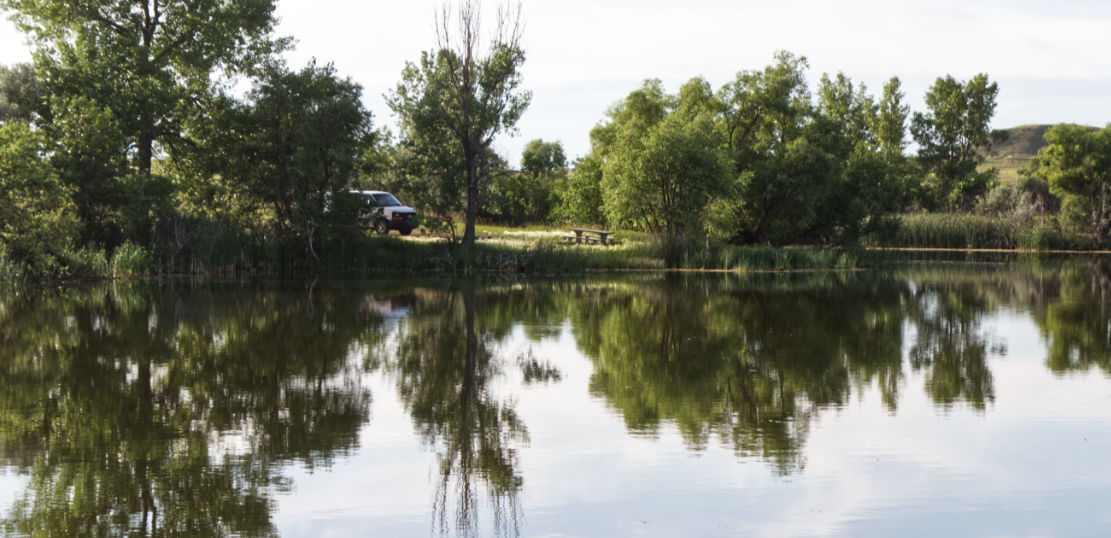
Story 1
You don’t need to be in a hilly place with deep mud before trouble sneers at you. A couple of years ago I was camped by a small lake in North Dakota. The area was essentially flat but there was a very slight slope toward the shore. The campsite and road were hard-packed dirt. There was nothing to worry about. (Except the mosquitoes.)
Brief rain during the night left the ground slightly damp. No problem, right, because it was essentially flat and the ground was solid.

But as I tried to drive away it was like the ground was coated with grease. I had almost no traction. My wheels spun. I was getting nowhere. But I eventually got traction after I slipped sideways and a wheel was in a grassy patch. If I had been more patient I could’ve waited a few hours for the ground to dry — as long as it didn’t rain again.
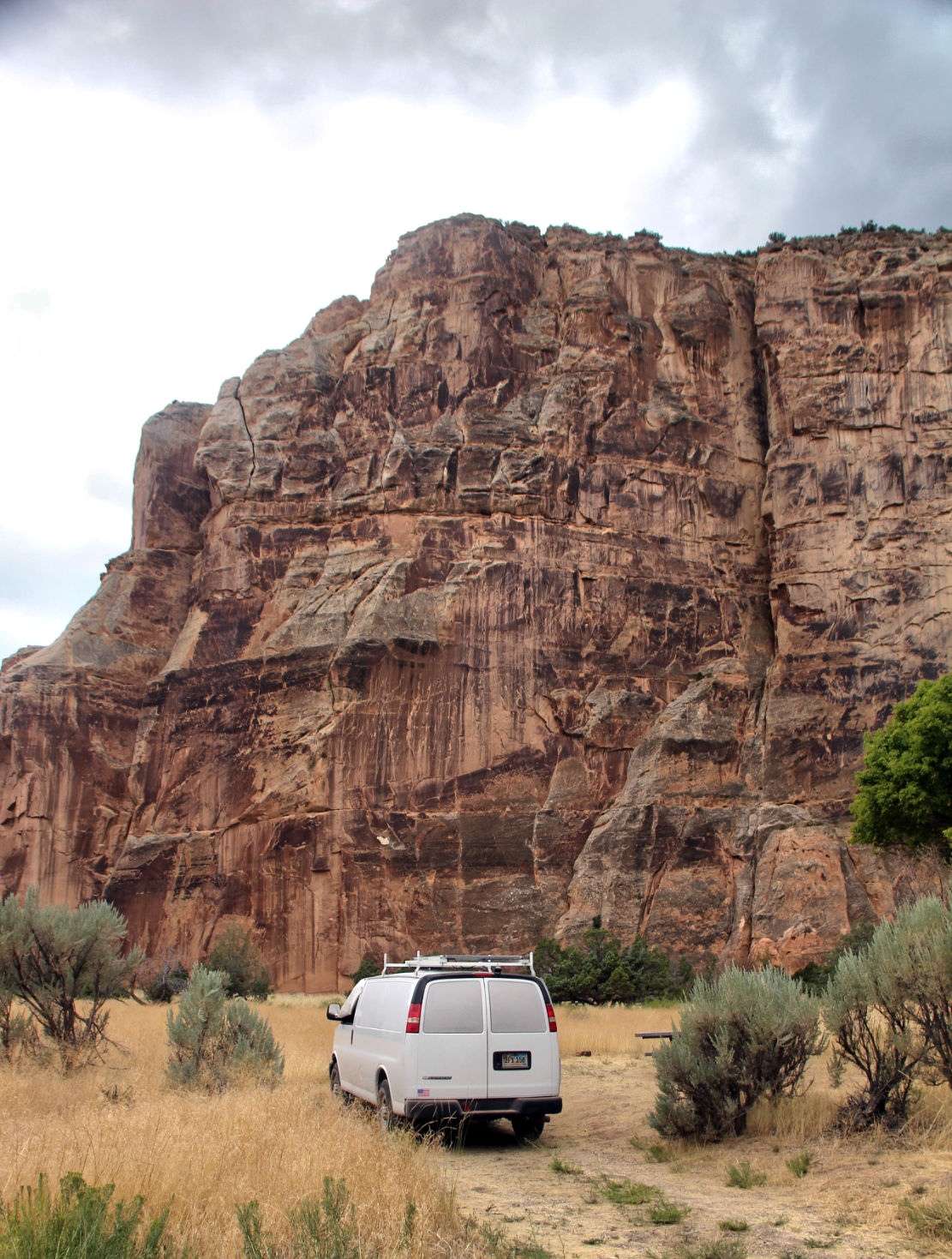
Story 2
Echo Park is in the Colorado half of Dinosaur National Monument. The sign at the top of Echo Park Road, before it drops down a steep grade with switchbacks, warned that the road is impassible for all vehicles when wet — including 4-wheel drives. But it was dry and the day was sunny, so down I went. I found a very nice campsite a short walk to the Green River and one of the places the Powell expedition had camped.
A few hours later the sky started darkening and I thought about the warning. Could I stay and hope it didn’t rain, or should I do the disappointing but wise thing and leave? I left. It rained hard a couple of hours later.
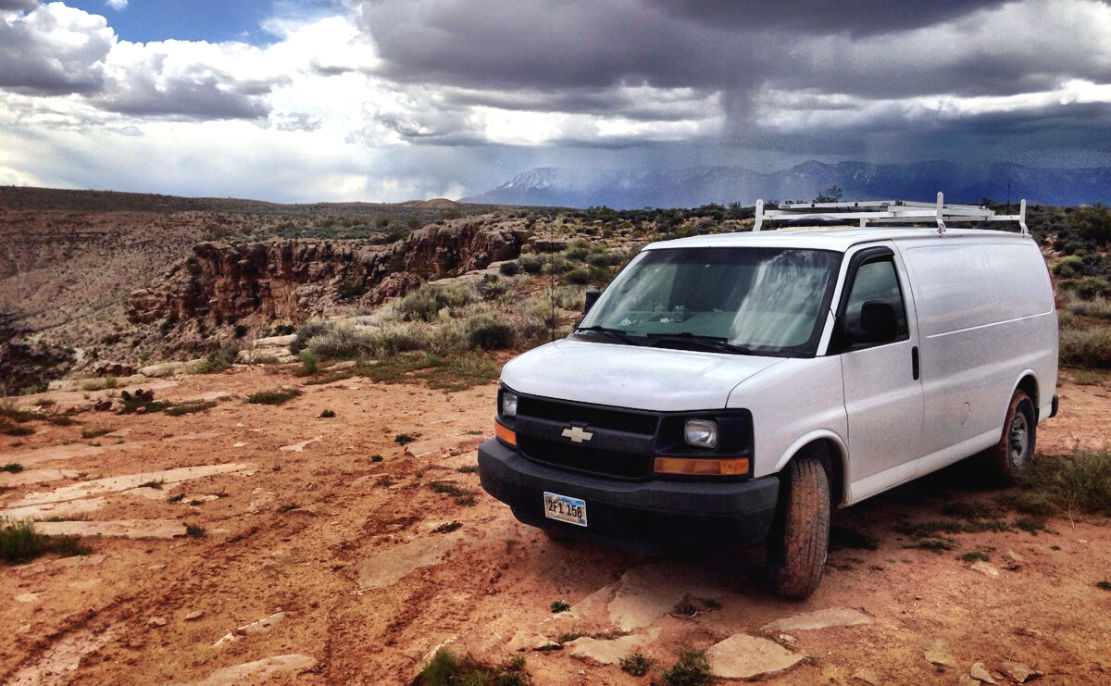
Story 3
I chuckled to myself as I approached St. George, Utah, from the southwest. Huge storm clouds were piled up over Zion National Park. “Welcoming me with rain yet again, I see.”
When I got closer to town and saw occasional puddles I realized it had already rained and that the storm was moving away. But it would mean my intended camping spot overlooking the Virgin River would be muddy. Hmmmm… I was very tired from driving, and I really wanted to camp there, so I took a chance.
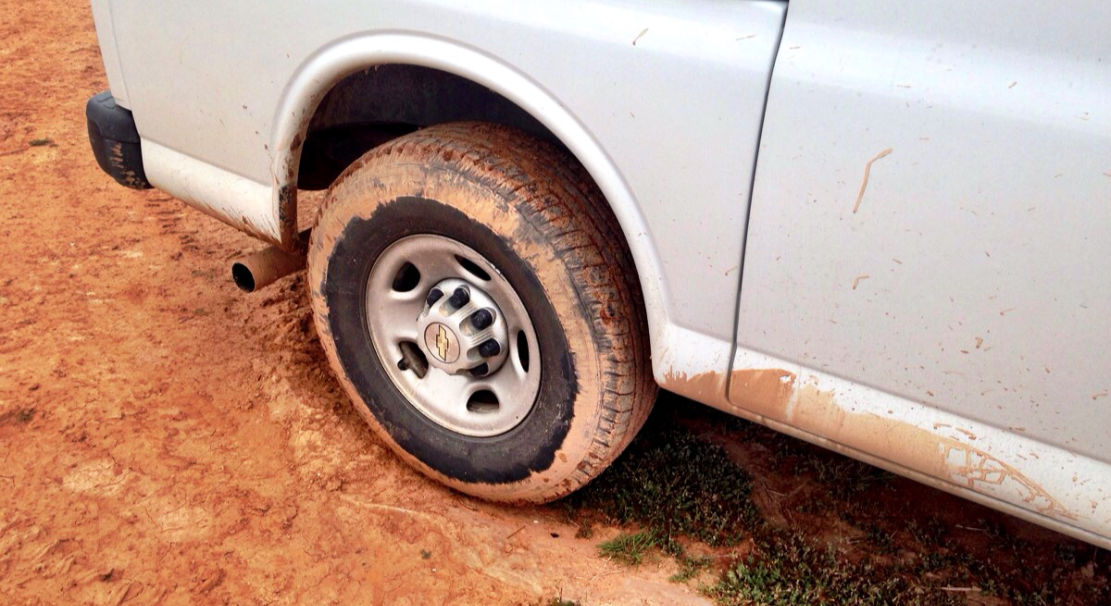
There were rock slabs interspersed with the mud, so I kept my momentum and plowed on, hoping the rocks would save me. Really, it was foolish, but I lucked out, both gong in and getting out.

Story 4
Even though I know all the smart things to do when the ground is slick, sometimes I just get stupid. Or overly confident.
I was camped near Flagstaff with Bob and some others. It had been raining a lot and spending nearly all day in the van was making me antsy. I really wanted to leave. Bob and I walked the road, noted the ruts and standing water, and scoped out ways to get around the bad parts. Smart, right?
Back at camp I secured my stuff for travel, bid farewell to the group, and headed out for drier places.
I made fine progress until I came to the biggest, wettest ruts. Instead of taking the detour we had plotted before, I decided I could drive on the high spots between the ruts — like I would do on dry trail. I promptly slid off. I was stuck, cockeyed to the road, spinning my wheels in sloppy, soupy muck. Sigh. Good thing I wasn’t out there alone.
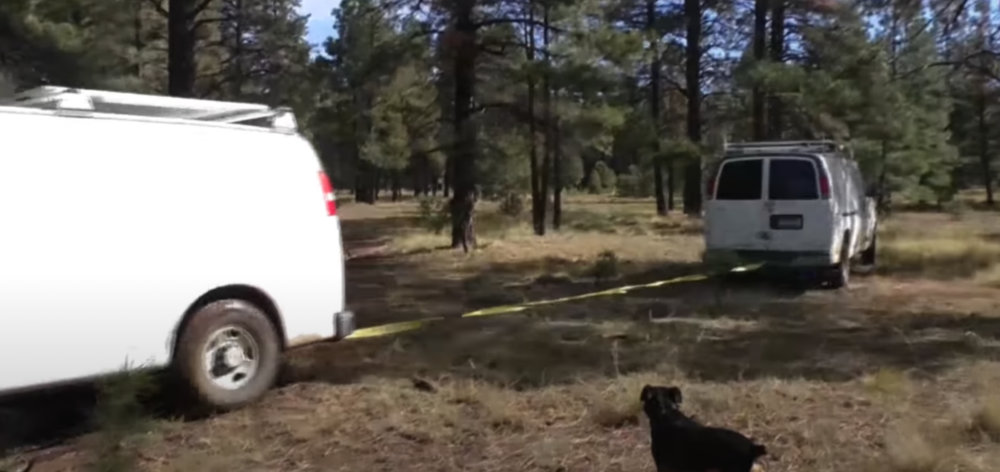
I did the walk of shame back to camp, explained my foolishness to Bob, and he pulled me out — while making a video to document my dumb move. Then, lesson learned, I took the detour like I should have.

These cautionary stories are very valuable!
Excellent Guidelines! Don’t stop and your not stuck! Back in parking is safest in most every situation.
As a gold prospector here in South Dakota, I use early Spring to scout new locations. A few years ago, I was out a bit early, and the snow was just beginning to melt. I was on an old Forest Service road that is normally in very good condition. As I crested a hill, I stopped to scout the road ahead. It was narrow with no place to turn around, and headed downhill. I decided to not go any further, but my truck began to slide forward. The road was covered in a sheet of ice that was hidden by a layer of fresh melting snow. I slid all the way to the bottom. There was no place to turn around, and I had zero traction. I began looking for trees, so I could connect my winch and pull myself back up the hill. Just saplings. I used my shovel and chipped the ice away down to the dirt & gravel road, and that gave me traction. I spent four hours chipping ice in front of my wheels on both sides for about two hundred yards uphill. I finished just before sunset. Once at the top, I found a spot to turn around. It only takes one situation like that to kill you. I learned my lesson and always scout the road ahead before getting into another situation like that.
Thank you for sharing your examples!
Al, I have a 2013 Chevy Express, rear wheel drive. Tyres are 2 years old, but standard tread. Did you switch out for more “off road friendly” tyres?
Yes, I have all terrain tires/tyres now.
Thank you! Will start my research into best brands.
I remember that video. I bought the gear Bob recommended and keep it in my van just in case.